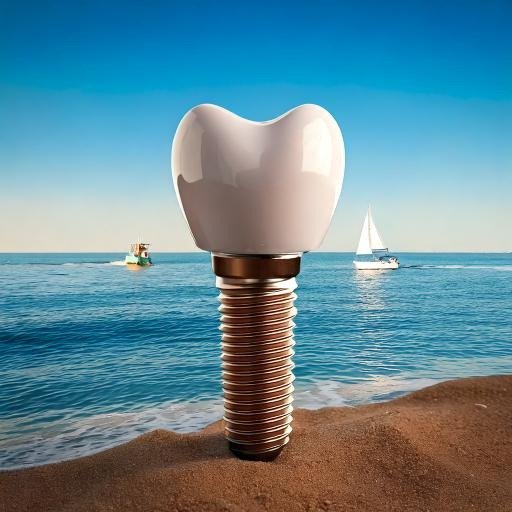Tooth pain can be unsettling, if you experience a toothache, and you are wondering if you need a root canal treatment in Horley read the article to understand your symptoms. In this guide, we’ll help you understand the key signs, symptoms, and diagnostic steps so you can make informed decisions about your oral health.
How to Tell if a Tooth Needs a Root Canal Treatment
Determining whether a tooth requires a root canal treatment is essential for maintaining oral health and avoiding further complications. Ignoring early warning signs can lead to worsening pain, infection, and even tooth loss. By understanding the key symptoms and acting promptly, you can protect your smile and overall well-being.
One of the most common signs is persistent pain. Unlike occasional toothaches that might resolve on their own, this discomfort lingers and often worsens over time. The pain may feel dull, sharp, or throbbing, and it can radiate to other areas of the face or jaw, making it difficult to pinpoint.
Sensitivity to hot or cold is another indicator. If you experience prolonged discomfort after consuming hot coffee or cold water, it could signal damage or infection in the tooth’s pulp. This sensitivity may also occur when eating sweet or acidic foods, highlighting underlying dental issues.
Swelling or tenderness in the gums around the affected tooth often accompanies these symptoms. This may include redness, puffiness, or even a small bump near the gumline. These signs suggest an infection that has reached the root or surrounding tissues, requiring immediate attention.
Other symptoms may include tooth discoloration, particularly darkening, which indicates nerve damage, or difficulty chewing due to discomfort or pressure on the tooth.
If you notice any of these signs, it’s crucial to seek professional dental care. Early diagnosis and treatment can save the tooth and prevent complications such as abscesses or bone loss. Your dentist will perform a thorough examination, possibly including x-rays, to confirm whether a root canal treatment is necessary. Timely action ensures your oral health is preserved, and discomfort is alleviated effectively.
What Is a Root Canal Treatment and When Is It Needed?
A root canal treatment is a dental procedure designed to save a tooth that is severely damaged or infected. It involves removing the infected pulp inside the tooth, cleaning the canals, and sealing them to prevent reinfection.
When Is a Root Canal Treatment Necessary?
- Severe Decay: When a cavity extends deep into the tooth, it can infect the pulp.
- Cracked or Chipped Teeth: Damage that exposes the pulp can lead to infection or inflammation.
- Trauma: Injuries causing nerve damage often require a root canal to save the tooth.
- Repeated Procedures: Teeth that undergo multiple treatments may need a root canal if the pulp becomes compromised.
Symptoms Indicating a Tooth May Need a Root Canal
Recognizing symptoms is key to addressing dental issues promptly. Common signs that indicate the need for a root canal treatment include:
Persistent Toothache
A continuous or throbbing pain is one of the most common signs.Sensitivity to Temperature
Prolonged sensitivity to hot or cold foods often signals pulp damage.Swelling and Tenderness
Infected teeth can cause swelling in the gums, sometimes accompanied by pus.Discolouration
Darkening of a tooth may indicate nerve damage.
Diagnosis: How Dentists Confirm the Need for a Root Canal Treatment
A dentist’s evaluation is essential to determine if a tooth requires a root canal treatment. The diagnostic process typically includes:
- Visual Examination: Dentists check for visible signs like decay, cracks, or gum swelling.
- X-Rays: Imaging helps identify the extent of the damage or infection.
- Percussion Test: Gently tapping the tooth reveals sensitivity or pain.
These steps ensure accurate diagnosis and appropriate treatment planning.
Is Tooth Pain Always a Sign You Need a Root Canal?
Not all tooth pain requires a root canal treatment. Sometimes, minor decay or temporary sensitivity can cause discomfort. However, if the pain is severe or persistent, it’s important to consult your dentist.
Patients often search for solutions to root canal treatment pain in Horley, highlighting the importance of understanding when intervention is necessary.
Differences Between Cavities, Abscesses, and the Need for a Root Canal Treatment
While cavities and abscesses can cause similar symptoms, they have distinct differences:
- Cavities: Result from enamel decay and often don’t require a root canal unless they reach the pulp.
- Abscesses: Infections in the root tip or gum may need drainage or a root canal to resolve.
Understanding these distinctions ensures the appropriate treatment is chosen.
What to Do if You Suspect You Need a Root Canal Treatment in Horley
If you experience symptoms of pulp infection, follow these steps:
- Consult a Dentist: Schedule an appointment for a professional evaluation.
- Manage Pain: Use over-the-counter pain relief until your visit.
- Avoid Aggravation: Steer clear of hard foods and maintain oral hygiene.
Understanding Root Canal Treatment in Horley
Root canal treatment has long been associated with pain, but modern dentistry has significantly transformed the procedure into a comfortable experience. If you’re searching for solutions to root canal treatment pain in Horley, it’s important to understand that most discomfort stems from the underlying infection, not the procedure itself.
The primary goal of a root canal treatment is to eliminate the pain caused by inflammation or infection in the tooth’s pulp. During the procedure, the dentist removes the infected tissue, cleans the root canals, and seals them to prevent reinfection. Local anaesthesia ensures that the procedure itself is pain-free. In fact, many patients report that a root canal feels similar to getting a standard filling.
Post-procedure pain is usually mild and temporary. You may experience tenderness or sensitivity in the treated area, particularly when biting or chewing. This discomfort is part of the healing process and typically resolves within a week. Over-the-counter painkillers, such as ibuprofen or paracetamol, are often enough to manage any lingering discomfort.
However, if you experience severe or persistent pain after a root canal, it could indicate complications such as an incomplete cleaning of the canals, a crack in the tooth, or an ill-fitting restoration. In such cases, it’s essential to consult your dentist promptly.
In Horley, our dental practice focuses on ensuring a comfortable experience for every patient. From advanced anaesthetic techniques to personalised aftercare, we prioritise your well-being. If you’re worried about root canal treatment pain in Horley, rest assured that our team is here to guide you through the process and address any concerns you may have.
Preventing the Need for Root Canal Treatment
Prevention is always better than cure, and this is especially true when it comes to root canal treatments. By adopting a proactive approach to oral health, you can significantly reduce the likelihood of needing this procedure.
One of the most effective ways to prevent the need for a root canal is maintaining excellent oral hygiene. Brushing your teeth at least twice a day with fluoride toothpaste and flossing daily helps remove plaque, the sticky film of bacteria that can lead to cavities and gum disease. Regular use of an antibacterial mouthwash can further reduce harmful bacteria in your mouth.
Routine dental check-ups and professional cleanings are also crucial. Dentists can identify early signs of decay, cracks, or gum disease before they progress to more serious issues requiring a root canal. Catching problems early allows for less invasive and more cost-effective treatments, such as fillings or crowns, to preserve your tooth structure.
Diet plays a key role in oral health as well. Limiting sugary and acidic foods and beverages reduces the risk of decay. Instead, opt for a diet rich in calcium, phosphorus, and vitamins that strengthen your teeth and gums.
If you grind your teeth (a condition known as bruxism), consider wearing a custom mouthguard. Grinding can cause tiny cracks in your teeth, which may lead to infections requiring a root canal if left untreated.
Finally, addressing dental trauma immediately is vital. Whether it’s a chipped tooth or a blow to the mouth, prompt attention can prevent infection and the need for more extensive treatments.
Preventing the need for root canal treatment is about consistency and vigilance. With regular care and a mindful approach to oral health, you can keep your smile healthy and avoid more complex dental procedures.
Common Misconceptions About Root Canal Treatment
Root canal treatments are often misunderstood, surrounded by myths that create unnecessary fear and anxiety. Clarifying these misconceptions can help patients approach the procedure with confidence and peace of mind.
One of the most prevalent myths is that root canal treatments are extremely painful. In reality, advancements in dental technology and anaesthetic techniques have made the procedure nearly painless. Most patients report that the experience is no more uncomfortable than getting a routine filling. In fact, root canals alleviate the pain caused by an infected or inflamed tooth.
Another common misconception is that root canal treatments are unnecessary because extracting the tooth is a simpler option. While extraction may seem convenient, it can lead to further complications, such as shifting teeth, bite issues, and jawbone deterioration. A root canal, on the other hand, preserves your natural tooth, maintaining both function and aesthetics.
Some patients believe that root canal treatments are not effective and that the tooth will eventually need to be removed anyway. This is far from true. When performed by a skilled dentist, root canals have a high success rate, and treated teeth often last a lifetime with proper care.
Cost is another factor that contributes to misconceptions. While root canals may seem expensive, they are a long-term investment in your oral health. By saving your natural tooth, you avoid the need for bridges or implants, which can be more costly in the long run.
Understanding the realities of root canal treatment can alleviate fear and encourage patients to seek timely care. If you’re looking for a root canal treatment in Horley or have questions about the procedure, consulting a trusted dentist can provide clarity and reassurance.





